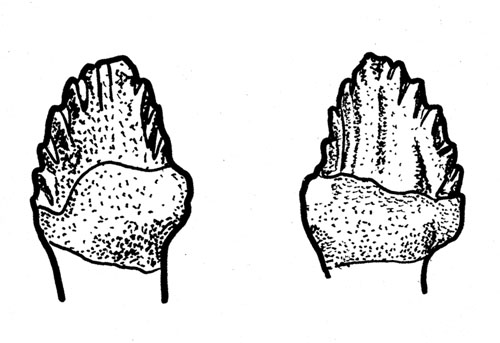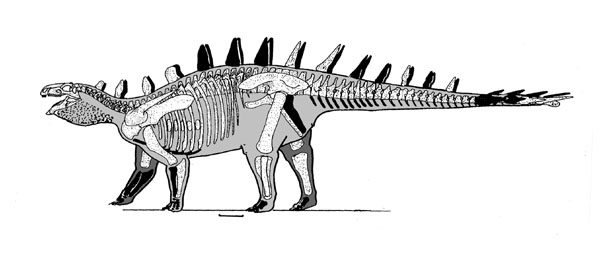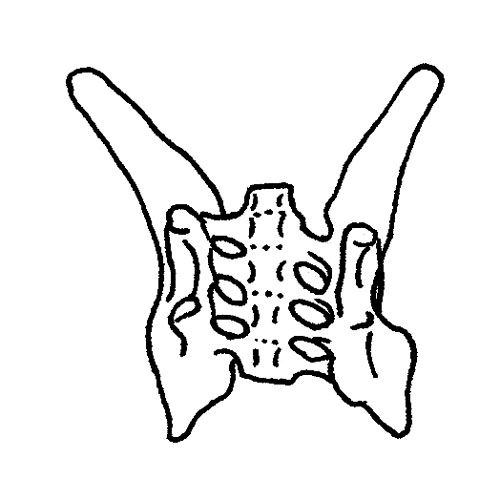
Species: taibaii DONG, TANG & ZHOU, 1982
Etymology: Taibai after the famous poet Li Bai, who lived during the Tang Dynasty
in Sichuan.
Holotype: IVPP AS V6728
Locality: Dashanpu (Dashanpu Dinosaur Quarry), lat. 29°5’N, long. 104°50’E, situated 11 km east of Zigong City, 250 km south of Chengdu, Hechuan County, Sichuan Basin, Sichuan (Szechwan) Province, China.
Horizon: Xaishaximiao (Shaximiao) Formation.
Biostratigraphy:
Age: Bathonian-Callovian Stage, Dogger Epoch, Middle Jurassic.
Note: Bajocian (CHEN et al. 1982), Lower Middle Dogger Epoch, Middle Jurassic.
Material: Skull and dentary, and fragmentary postcranial skeleton, including
3 cervical vertebrae, 3 dorsal vertebrae, fragmentary sacrum, several caudal
vertebrae, 2 metatarsals, several phalanges, several dermal plates one spine,
and four scutes.
Note: Paleopathology, 3 or 4 caudak vertebrae form a small lub-like mass pathology.


Teeth.


Referred specimens:
CV 00720: Left quadrate and posterior portion of left lower jaw, right humerus, right ulna and radius, right carpi, left tibia and fibula, left pes, 28 vertebrae, sacrum, ilium, 20 plates from neck, dorsal, sacral and anterior dermal tail, and scutes.
CV 00721: 25 presacral vertebrae, dorsal ribs, right radii and dermal plates.
ZDM 7001 (Provincial excavation no. T 7001): Skull with articulated lower jaws, nearly complete vertebral column, partial rib series, right scapula, right coracoid, left humerus, both ilia, left pubis, both femora, both tibiae, partial right pes, plates, 3 caudal spines, and dorsal body scutes.
ZDM T7002: 8 vertebrae, ilia, and 2 dermal plates.
ZDM 7003 (T7008?) (mislabeled ZDM 7001): Left pubis.
ZDM T7004: Right scapula and coracoid.
ZDM 7010: Parascapular spine with a nearly complete skeleton..